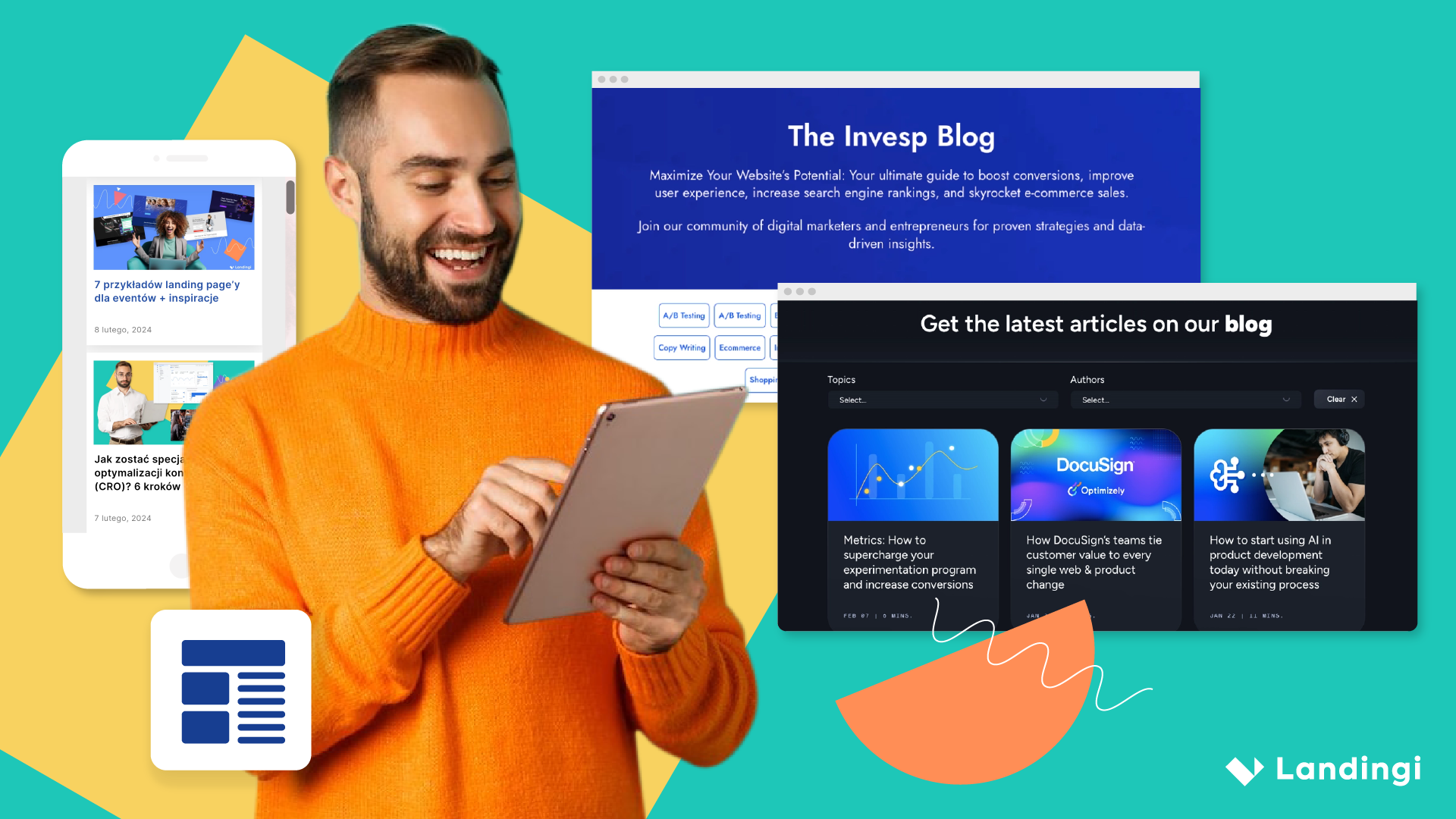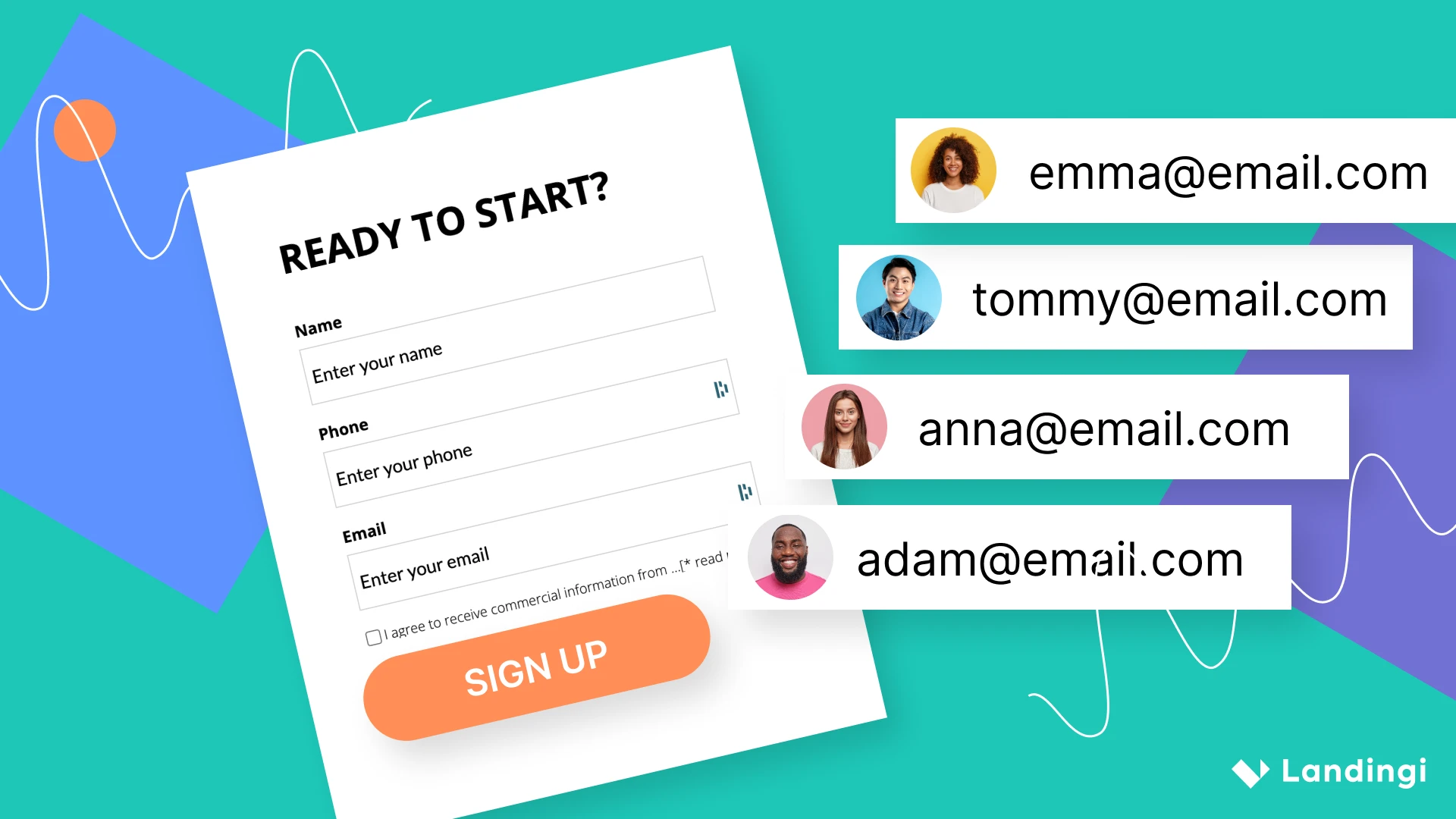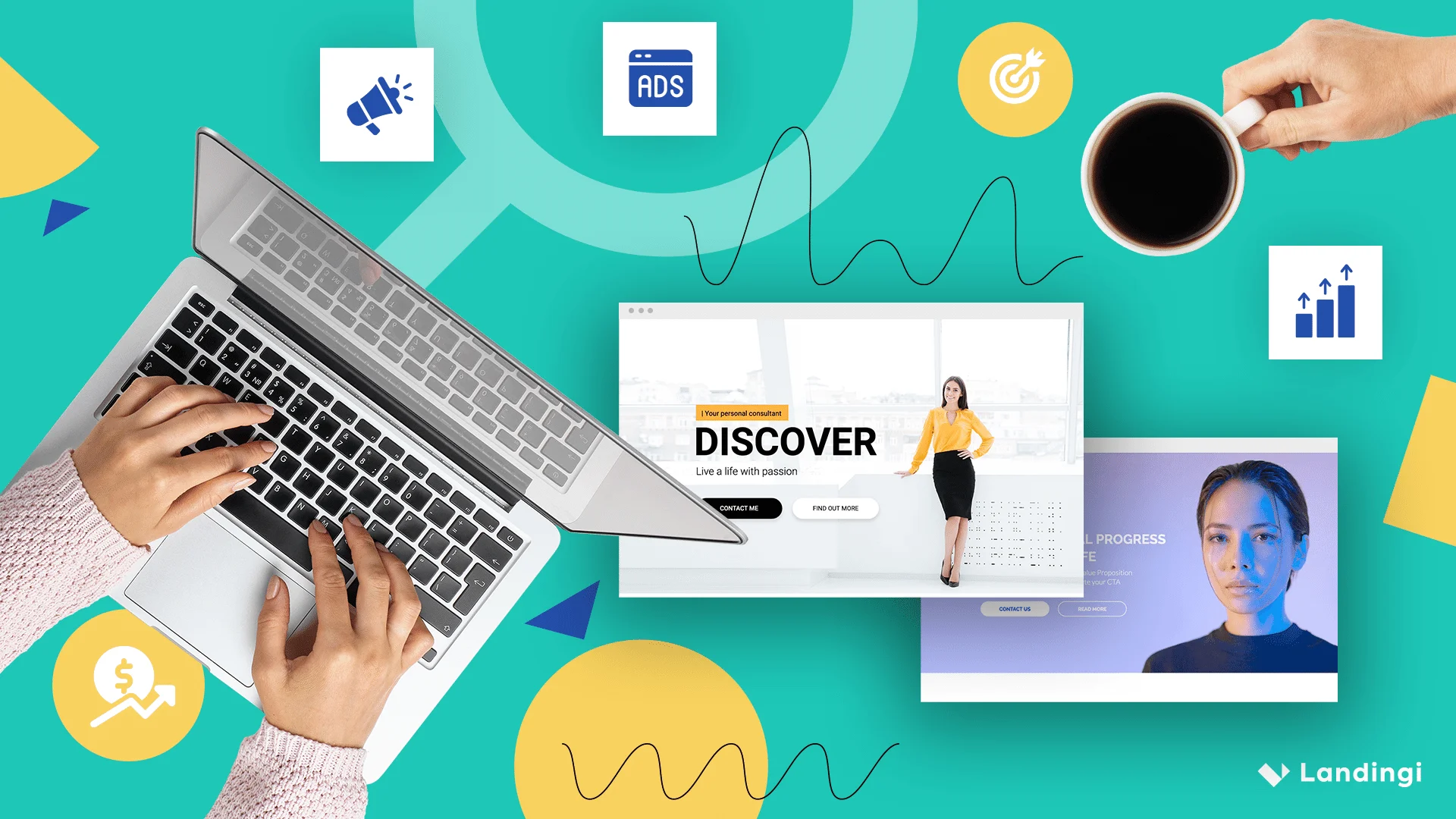You’ve created a product or service page. It looks great and contains an impressive amount of information. The text is entertaining, and your boss smiles at the sight of it and congratulates you on a job well done.
Yet, it does not deliver. You’re expecting sales to go through the roof, but it simply does not happen. You do get some traffic on your website, but it’s not reflected in conversion.
You can either worry and get upset about it, or get familiar with conversion rate optimization. What is CRO, how should you tackle it, what are some conversion rate optimization practices that you can implement straight away, and what is a good conversion rate?
Too many questions, not enough answers? Fasten your seatbelt, we’re going to start answering them right away.
Make your sections smartable and let go of mundane manual tasks with Smart Sections! An easy way to manage bulk changes.
What is conversion rate?
Conversion rate is a metric expressed as the percentage of people who perform the desired action on a website out of all the total number who visit it.
CR = (people taking action on a website / people visiting that website) * 100%
The action depends on the goal you set for your business or a particular campaign: sales, e-mail entries, leads, or even social media buzz. We’ll cover the possibilities later on.
Creating a landing page should always align with a goal, and the conversion rate, in short, should tell you what’s the level of achieving it. And conversion rate optimization is a constant process of improving your conversion rate: finding logjams and areas in which you can develop even further.
Why is conversion rate important?
Long story short: it gives you some information about how your online business is doing.
If your conversion rate is rather low, finding a potential bottleneck is crucial for unclogging the process and, in turn, increasing conversion.
If your conversion rate is already high then well done, but it doesn’t mean you should get complacent! You still might want to actually analyze your performance in order to identify the “shining stars” and maybe even consider scaling them up.
Just imagine that one day your conversion rate has suddenly gone up by 20%. It may have been caused by someone sharing your landing page on social media or by an influencer promoting similar products on their TikTok. You can do something more about it, but you won’t have any idea about your potential if you just consider the situation as a lucky day and don’t carry out an analysis. This is just one of many possible examples.
Conversion goals: the hows and whys
To even be able to start dealing with your conversion rate and its optimization, you first need to identify one major goal and evaluate its success.
While there are many specific conversion goals, let us identify the three most common ones that are usually measured for websites.
- Sales – how many people purchase your product or services via your site. While it’s a great idea to measure this, not each and every visitor will be ready to purchase immediately after the very first touchpoint with your brand. They may, however, familiarize themselves with your offer and maybe even leave some data in order to stay in touch with your brand via, e.g., special landing or product pages.
- Leads – how many people leave their contact data in exchange for your content or lead magnets. The main principle of landing page templates is often to build them with lead generation in mind, then that data can be used for lead nurturing, email marketing activities, or sales campaigns.
- Sign-ups – if you run a premier podcast, webinar, virtual conference, or any other type of event, you may want to specify which types of leads you want to get or limit them to “email only”. This also applies to B2B websites on which sign-up is required to use a particular service.
Ok, but what is a good conversion rate?
A rule of thumb, according to Funneloverload and Wordstream, is that a good conversion rate is 2.35%, with some industries achieving even up to 11%. Of course, it depends on many factors: your offer, copy, and presentation of benefits. It may also be affected by industry trends or even one-off marketing campaigns, so it’s always a wise idea to watch your conversion rate closely.
In brief, if your conversion is above 2% then it’s decent, but if it’s rather around 0.5% then you may want to identify some…
Reasons for low conversion rate
And oh boy, there are so many possibilities.
You have no goal (or too many) in mind
You want to measure something, but you don’t know what that “something” is. You’d like to both obtain sign-ups and drive immediate sales, and you obviously wouldn’t mind gaining some social media followers too.
Measuring too many stats and relying on multiple conversion goals on one site is a tailor-made recipe for disaster.
Align one conversion goal with your website, landing page, or product page, and make sure it sounds convincing for those who you’re hoping to convert.
No benefits, no conversion

You want your visitors to convert, so show them benefits that speak louder than blocks of text. Show them not what your product or service does, but how it can help with their everyday work. Focus on real usage and features that could be utilized upon conversion.
But how?
Let us chip in with a few ideas.
- If you write a blog post with a strong desire for further conversion, explain in it how your product can help solve a particular problem and insert a few banners to encourage visitors to find out more.
- If you create a landing page for an innovative gadget, for example, choose a landing page example that can help you highlight 3-4 main features of your product, preferably above the fold.
- If you want to get more attendees for your webinar, don’t bore them with long descriptions but instead use a few actionable tips and tricks they will be able to implement straight after your webinar finishes.
See? It’s not as difficult as it seems to be.
Highlighting zero benefits or info is not warmly welcomed, but you could also provide…
Too much information
…confusing your clients, big time.
It’s absolutely marvelous if your product offers a lot of features or if your services are extremely expansive. Rethink, though, if you need to communicate everything about them in detail on the page you want to drive conversion from. Especially considering that multiple offers on your landing page can reduce conversions by as much as 266%!
Writing too much in a limited amount of space might be rather overwhelming for readers, affect the loading time, and eventually put your potential converters off.
Your product has many features and offers a lot? Great, but don’t overwhelm potential clients with all of them from day one!
- A too-long copy can be boring.
- Too many photos may impact the loading time.
- Too many elements on your page can be distracting.
- Too many pop-ups or encouragement to convert may be considered pushy and too salesy.
It’s all about the golden mean, like with just about anything.
All buzzwords, no value
Your product is so innovative in an ever-changing environment, these challenging times and a difficult 2021 ahead. It’s eye-opening, jaw-dropping, and mouth-watering.
But will it really be a valuable asset for your visitor’s life or work?
Ok, there are obviously more mistakes that one might make to negatively affect their conversion rate. Instead of focusing on them, though, let’s provide some actionable tips for conversion rate optimization.
Get 111 Landing Page Examples—The Ultimate Guide for FREE
Tips for conversion rate optimization
While you can use a variety of techniques to increase conversions on your website, some of them may be rather troublesome, non-cost-effective, or time-consuming. We’ve prepared a curated list of some conversion rate optimization tricks that you can start using as soon as you finish reading this article.
Test the waters
A/B testing can be an efficient way to compare various elements of your site (e.g. CTA buttons, copy, the number of fields in your contact form, or even product photos). For 56% of marketers, this is the preferred method of conversion rate optimization.
If you already have some elements verified in terms of their performance, you can run an A/B test to further evaluate others that may affect the conversion rate in your case.
If your goal is generating leads via a free e-book you share with your potential audience, for example, you could test what impacts conversion more: an e-book mock-up, a simple photo of the cover, or perhaps your photo as its author.
You may go even further and decide to perform split testing, which compares two totally different landing pages to evaluate both “extremes”, as they may be called.
And although it seems crucial to continually test, compare, and optimize, actually only 17% of marketers use landing page A/B tests to improve conversion rates. This gives you a lot of room for eventually outperforming your competitors and gaining a market advantage.
Hey! You don’t need an external solution or a bunch of testers to compare and analyze your performance or to identify bugs and areas for improvement. Instead look for a landing page builder that offers not only design features, but also built-in A/B and split testing options.
Use landing pages
You’re on a Landingi.com blog post, so you must have been expecting us to mention this one. Not without a reason, though!
The numbers speak for themselves: websites with 40+ pages generate 12x as many leads as websites with only a single landing page.
Landing pages are easier to build and replicate, as well as to maintain and update. You can create an intuitive landing page in seconds using reliable landing page tools, duplicate it in seconds, and change a single element on the spot. With regular websites, you may not have that flexibility and yet you may achieve worse results.
Landing pages are also naturally optimized for all devices, including mobiles, so all those nightmares about making special efforts towards responsive web design will be gone.
Even a simple WordPress landing page can turn out to be a goldmine, bringing you more traffic and conversions than an advanced, well-expanded page. And landing pages are easy to make, especially if you use Landingi.
Narrow down promotion
You get a lot of traffic, but it’s not reflected in your conversion? You may want to narrow your target audience down to drive only valuable traffic with a huge potential of converting.
Instead of sharing your site anywhere and everywhere, focus on communities and placements that could bring you real traffic made of people who are potentially interested in your offer and might easily convert.
Opt for a clear and catchy message targeted at a specific audience that you identified when creating your marketing strategy. Even a smaller but well-chosen group can bring higher conversion, and for this particular advice to work, you should prioritize quality over quantity.
Good copy for the win
A lot of conversion rate optimization problems lay in copy and creatives that are simply not appealing or don’t say enough about real benefits. And when facing such fierce competition, you need to stand out.
Headlines are often catchy and the first parts to catch users on the hook, but make sure that are not clickbait only. There should always be added value behind each and every copy.
But copy is not only about the headline and description: it’s also what you insert on CTA buttons, what you require and how you write it in your form fields, what you put in subtitles, and how you explain benefits.
You need to make your copy:
- consistent with your strategy (it should be in line with what you advertise on social media, online communication, and offline channels),
- true (if you promise the moon, give the moon!),
- straightforward (you’ll find time for telling the full story later on),
- focused on benefits (your audience wants to know not what you do, but how you can help),
- short & sweet (imagine receiving $100 for each deleted word!).
Mobile-friendly is not a choice any longer
….it’s a must.
According to Nifty Marketing, as many as 86% of top landing pages are mobile-optimized. Google states that a mobile page load time of over five seconds almost doubles the likelihood of visitors bouncing.
With ultra-fast smartphones and tablets, users require more than just seamless browsing of the Net. They want to be able to verify all info, deepen their knowledge, easily finalize a purchase, or familiarize themselves with content.
And if you don’t let visitors to your site do that, you’re likely to lose potential customers. Make sure that your site is mobile friendly and displays in the right way regardless of the device. Double-check that all of the elements on your site, especially buttons, are functional. Even a small mistake here can cost you a significant drop in conversion rate.
Leverage social proof
Nifty Marketing research also states that 37% of the top landing pages include some testimonials. Why is that so? Testimonials, references, and opinions that are signed by actual clients and companies can positively influence conversion rates to the point of turning unconvinced users into satisfied customers.
Inserting any type of social proof – be it references, case studies, or statistics, as well as opinions and logotypes of partner companies – work towards credibility and can bring a potential lead closer to carrying out the desired action.
How many times was your attention drawn to something in particular because you saw it somewhere before, had it recommended by someone you trust or got that irresistible shopping impulse? Exactly.
Reduce page loading time

Nobody likes to wait, especially potential clients. You may want your website to stand out with great images and a variety of elements like videos, and that’s amazing, but remember that they can affect loading time.
And your users may not be particularly fond of that, in which case your conversion rate may plummet rather badly.
While you should aim for most of your website metrics to be as high as imaginable, bounce rate should actually be one to keep at the lowest level possible. A typical landing page bounce rate benchmark is as high as 90% – fairly terrifying, isn’t it?
Rethink if your page needs all those fancy elements or check if you can resize them. Sometimes a quick compression of your photos, shortening of your videos, or removal of some parts of HTML code can visibly speed up your site and increase your chances of a better conversion rate.
You never try (and analyze), you never know!
Call To Action
90% of visitors who read your headline will read your call to action (CTA) too, and that is just one reason why you should make it stand out.
Mark our words: with the right CTA, your visitors won’t have to guess what you want them to do once they land on your site. You want them to sign up for a webinar? Tell them what the benefits are and simply shout “reserve your spot” from your call to action button. Driving sales? Well, what could indicate the action better than “buy now”?
Test a few variations on your CTA: Buy Now, Purchase Now, Get Now – just to name a few.
Serve up a delightful user experience
Let’s face it: you’ll never fully please each and every user, but you can make the experience enjoyable for everyone. How to do it?
- Shorten your custom form fields if possible – do you really need your users to provide you with their phone number or time zone?
- Add social media icons – this might drive some potential “conversion” away from your site, but some users may need that extra touchpoint to decide on giving your offer a go.
- Offer marketing automation solutions for instant customer service – you might want to think about integrating live chat widgets to ignite interactions.
- Use consistent design in your promotional ads, on the page you want to boost the conversion rate of, and in the materials you share to increase brand awareness.
Summary
Of all the sayings in the world, this one perfectly sums up your marketing efforts and conversion rate:
You’ve made your own bed and now you must lie in it.

There are many factors that contribute to conversion rate and equally many methods for conversion rate optimization. What you need to take into account is that working on improving your conversion rate is a never-ending, yet extremely rewarding process. We hope that our bits of advice will help you tackle your conversion rate – just make sure to arm yourself with an intuitive landing page creator to boost it even quicker and more effectively.








